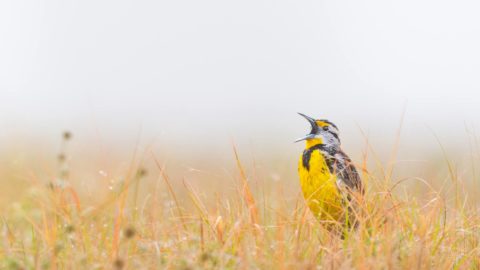Sizing Up the World’s Birds with AVONET
June 23, 2022
From the Summer 2022 issue of Living Bird magazine. Subscribe now.
Where does evolution happen the fastest? What affects the likelihood that a species will go extinct? AVONET, a new database containing detailed measurements of almost all the bird species in the world, opens a door for scientists to study complex questions like these by revealing global patterns in bird ecology and evolution.
A special issue of the journal Ecology Letters, published in February 2022, introduces this new open-source database of morphological, ecological, and geographical data for nearly 11,000 bird species, including detailed beak, wing, tail, and tarsus (lower leg) measurements—what the authors call functional traits.
According to Joseph Tobias, a biology professor at Imperial College London who led the decade-long effort to assemble the massive new database, the size and shape of beaks, wings, tails, and legs provide rich information about how species fit in the local food web, how they move, and how far they travel.
Tobias says the idea for AVONET started taking shape in the late 1990s and early 2000s, as he ventured on field expeditions to Paraguay, Ecuador, and Indonesia. There he measured birds and collected similar datasets of functional traits at smaller scales.
“In measuring lots of species in tropical forests it became clear that there were certain patterns. … You could look at a bird’s legs and know how much time it spends on the ground. You could look at a bill and know something about what it eats. Wing shape could tell you how much time a bird spends flying,” Tobias says. “It made me think about whether some of these patterns were global, and how that could be useful for research.”
These functional traits have played a role in the study of birds since at least the days of Darwin. In a classic example, differences in bill size and shape among a group of closely related birds in the Galapagos, known as Darwin’s finches, led to insights about natural selection and the evolutionary relationship between a bird’s beak and what it eats.
Tobias says that in the last few decades ecologists and evolutionary biologists have increasingly been looking to functional traits to help answer big questions about diversity and evolution. But the scope of this kind of research has been limited to specific regions or groups of birds, since no database existed of measurements for all the world’s birds.
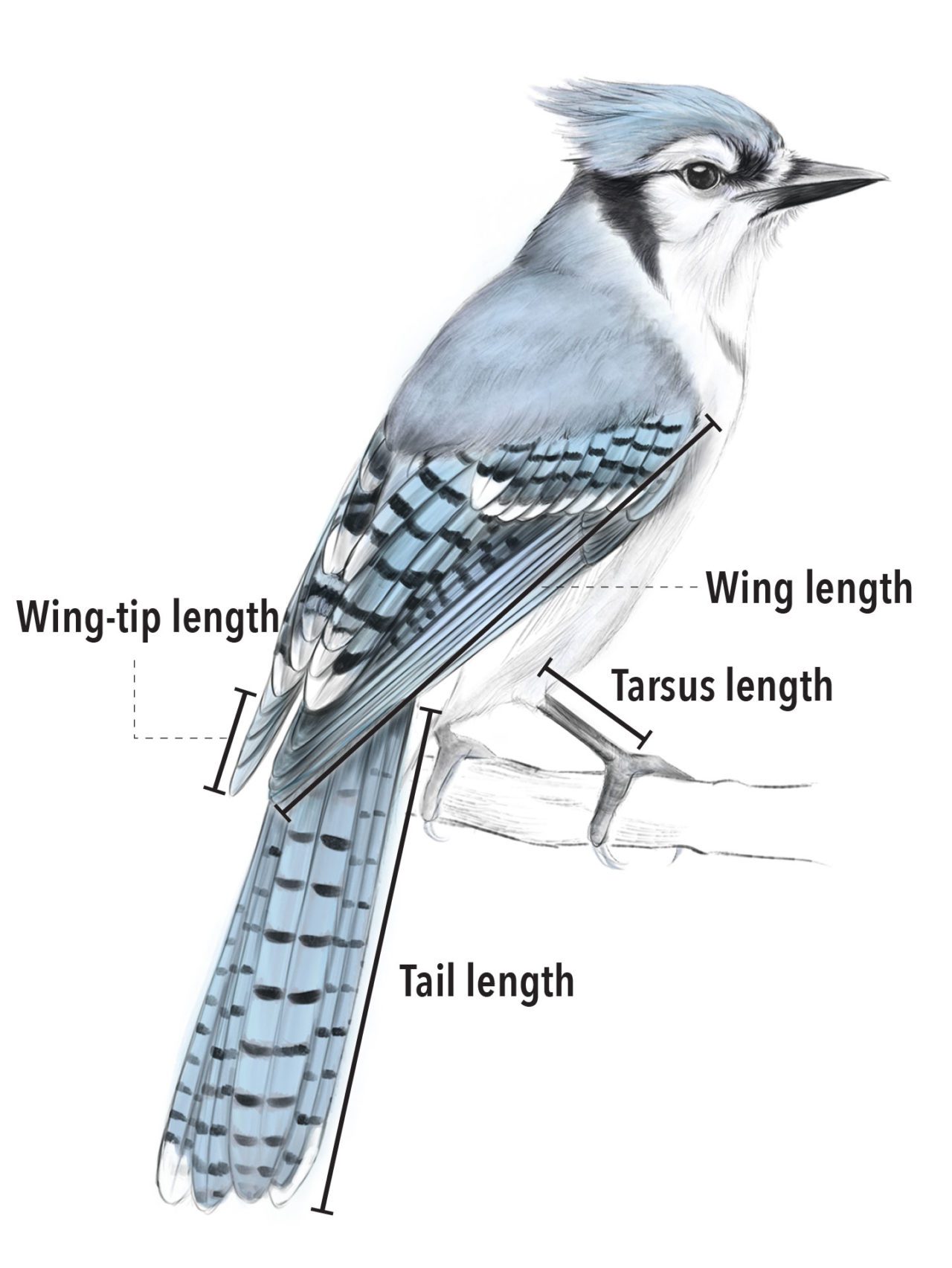
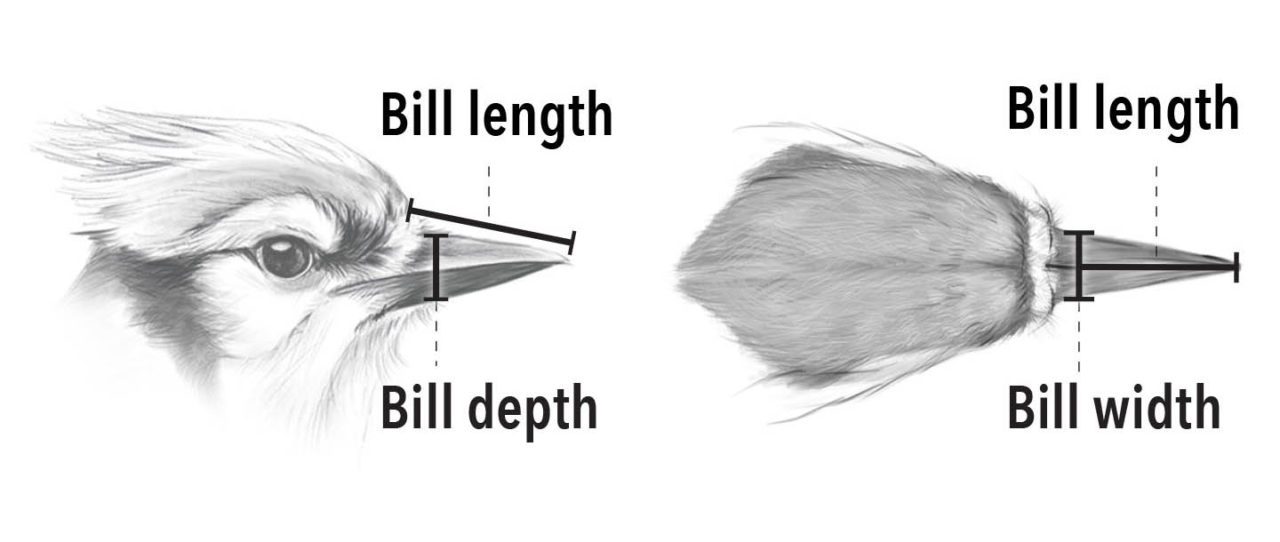
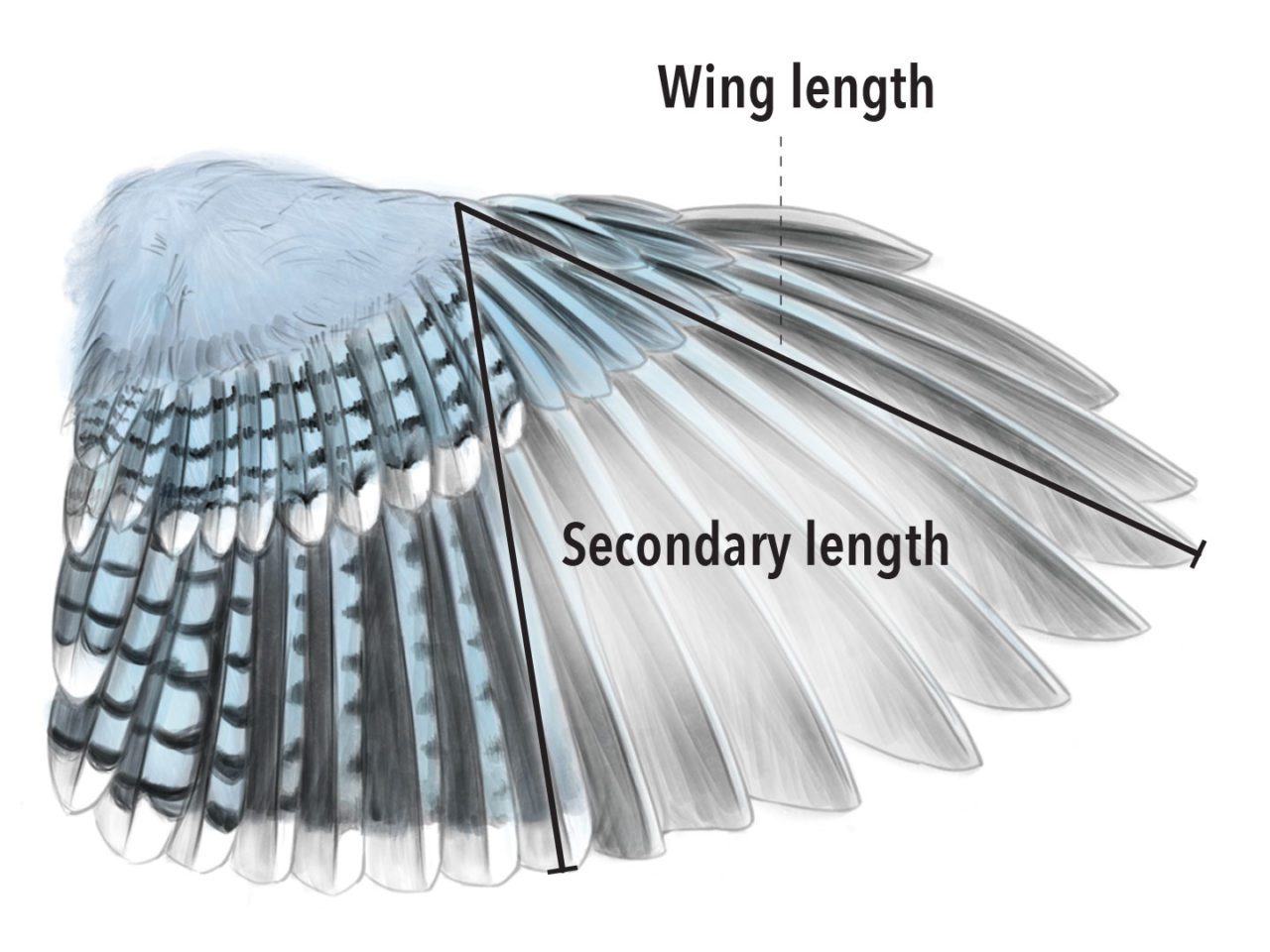
Each of the measurements in the new AVONET database—including tail length; tarsus (lower leg) length; bill length, depth, and width; and an array of wing measurements—correlates to the way a bird makes its living in the world. For example, birds with longer legs tend to spend more time on the ground, and birds with longer, narrower wings tend to have better dispersal ability. Illustration by Jillian Ditner.
The AVONET project really picked up steam around 2012, says Tobias. That’s when Catherine Sheard, a PhD student in his lab at the University of Oxford at the time, began a project to assemble trait data for all 6,000-plus passerines in the world—over half of all bird species.
Sheard spent more than two years visiting museums on both sides of the Atlantic, including the American and British Museums of Natural History, personally measuring around 11,000 specimens—a process she says was both exhilarating and terrifying.
“I was measuring specimens collected in the mid-1800s by Darwin and Wallace, also type specimens of extinct species,” Sheard says. “It was an honor, and very stressful to handle these fragile and irreplaceable birds.”
From there, Tobias and his team worked on the remaining 4,000-plus species, eventually garnering help from more than 100 collaborators (including Cornell Lab of Ornithology researchers Natalia Garcia and Eliot Miller, who measured specimens at the Cornell University Museum of Vertebrates). All told, the data in AVONET contains measurements of more than 90,000 specimens for about 11,000 species.
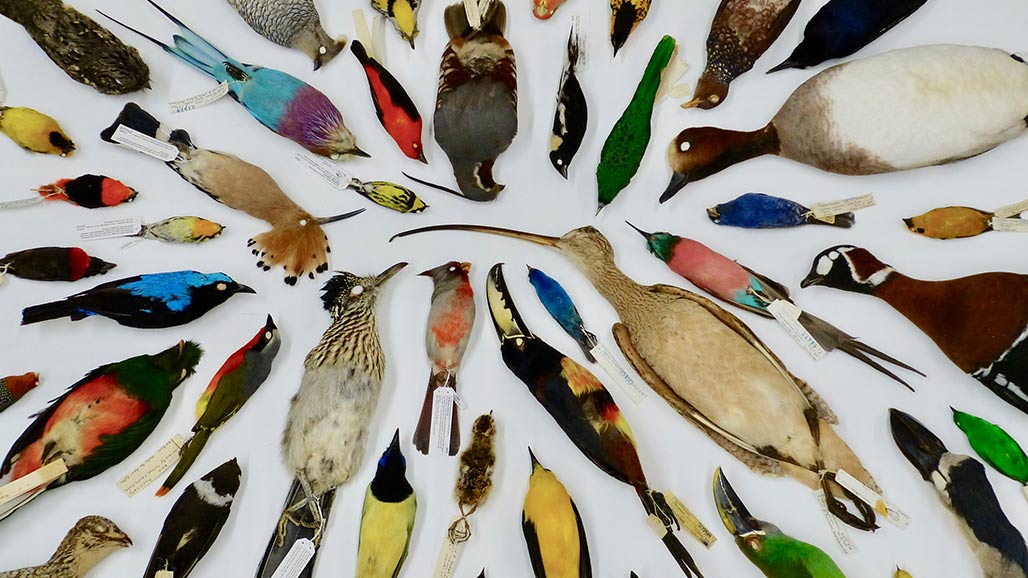
Benjamin Freeman, a postdoctoral researcher at the University of British Columbia, is one scientist who contributed measurements to the project, and he’s already publishing research using AVONET data. In a study appearing in the same special issue of Ecology Letters, Freeman used bill-size data from 1,000 closely related pairs of birds around the world to show that evolution appears to be happening more quickly in temperate zones than in the tropics—a result that contrasts with several current theories.
“Previous studies looking at this might have used 100 or so species pairs,” says Freeman. “We used over 1,000 pairs from all different parts of the world. … That was key to being able to say that this pattern [of faster evolution in higher latitudes] is happening worldwide.”
AVONET also inspired Brian Weeks, an evolutionary ecologist at the University of Michigan, to test a theory about extinction risk. According to Weeks, studies have shown that certain traits such as larger size, specialized diets, and poor dispersal ability can increase the likelihood that species will go extinct. By combining the AVONET data with another global database, the IUCN Red List of Threatened Species, Weeks was able to show that birds in diverse ecological communities face lower risks of extinction than birds in simpler ecosystems, regardless of the physical traits that could otherwise make them extinction-prone. In other words, biodiversity in an ecosystem can protect birds with traits like large body size or stubby wings that might otherwise be at risk of blinking out. Weeks says results like these can help shift the conversation when it comes to conservation science.
“We’ve thought about diversity as the endgame of conservation, but this shows that it’s important to recognize that diversity itself has benefits to the species,” says Weeks. “It’s another call to be moving away from the species as the unit of conservation, and toward the ecological community [as a whole].”
According to Joseph Tobias, the work on AVONET is far from finished.
“Right now we have an average of nine to 10 specimens measured per species, which allows us to look at relationships between the species,” Tobias says. “If we could get to 100 [specimens] for each species, we could start to look at variation within species as well, which would open up a whole new layer of research possibilities.”
To that end, Tobias hopes that anyone, anywhere in the world, who measures birds—whether in museums or out of mist nets—will consider using the AVONET protocol and contribute data to the project.
“AVONET is about facilitating getting information at scale, and I’m really excited about new ideas that come up,” says Tobias. “I think this data will get used in ways we can’t yet envision.”

All About Birds
is a free resource
Available for everyone,
funded by donors like you
American Kestrel by Blair Dudeck / Macaulay Library
